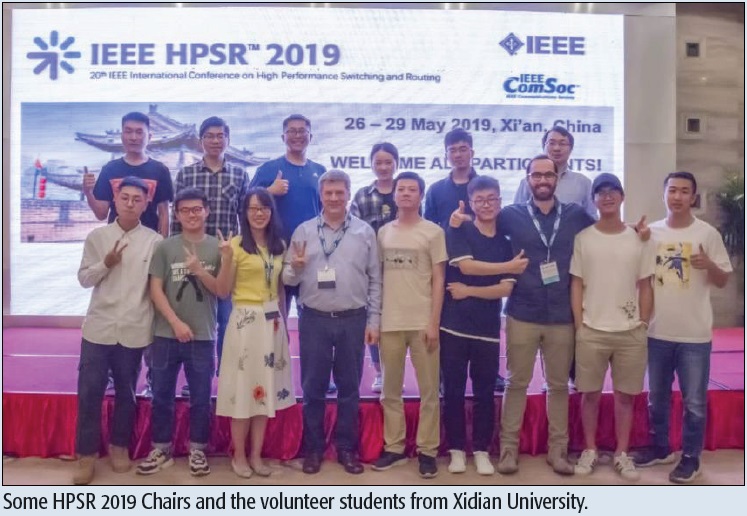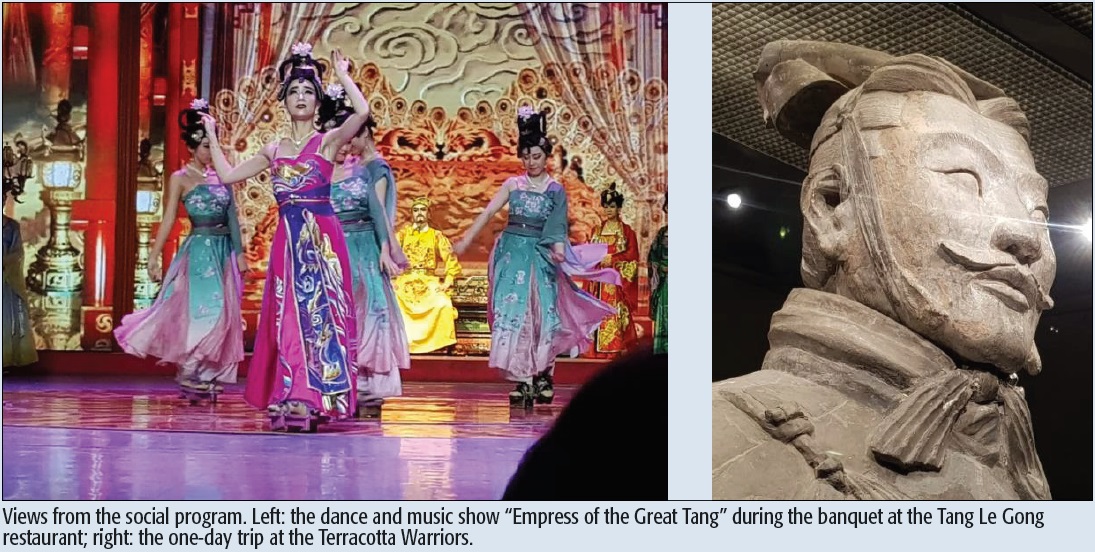
The paradigms of software-defined networking (SDN) and network function virtualization (NFV) are the two major breakthrough innovations that have most profoundly impacted the world of switching and routing in recent years. This led to novel approaches that leverage hardware-software co-design techniques, or exploit high-performance programmable data planes or fast network processing frameworks, such as P4, NetFPGA, OpenState, etc. While the outcomes of those innovations are still progressing and producing new results both in terms of research and of industrial applications, we are today welcoming another important revolution: the pervasive wave of big data has also splashed on the shore of computer networks and telecommunications. Data analytics, data mining, machine learning, network monitoring and traffic prediction are the new topics galvanizing researchers in academia and business developers in telcos, equipment-vendors and start-ups of the ITC sector.
If those are the new tools for the development of technology, we shall not forget the fast innovation that is occurring in the application scenario, with the new “verticals” of the next-to-come 5G era: Internet of Things, smart factory, Industry 4.0, content distribution, and automotive, just to mention the most popular ones.
How are the breakthrough changes occurring to networks and telecom affecting the more specific area of switching and routing? That is the question that the Chairs of IEEE HPSR 2019: the 20th International Conference on High Performance Switching and Routing (https://hpsr2019.ieee-hpsr.org/) have chosen this year as the main focus for this traditional conference. We were confident that HPSR would provide an ample overview of the most advanced research initiatives and results worldwide, by its contributed, invited and tutorial papers. Therefore, researchers were strongly solicited to submit their works on big-data, data-analytics and machine-learning techniques applied to switching and routing, especially for 5G, IoT, Industry 4.0, and other advanced verticals. This obviously has not excluded contributions about more traditional topics in switching and routing, which were welcomed as well.
As HPSR 2019 was the 20th edition of High Performance Switching and Routing, we did our best to locate HPSR 2019 conveniently in time and space. The conference started immediately after the end of ICC 2019, which was held in Shanghai, so researchers living far from China had the opportunity to attend both conferences in a single overseas trip. Moreover, to celebrate the 20th anniversary of HPSR, we chose an outstanding and regal location: Xi’an. This is the capital of Shaanxi Province, People’s Republic of China. One of the oldest cities in China, Xi’an is the oldest of the Four Great Ancient Capitals, having held the position under several of the most important dynasties in Chinese history. Xi’an is very rich with historic places. In addition to traditional Chinese historic sites, such as the Bell Tower and Drum Tower, The Giant Wild Goose Pagoda and Small Wild Goose Pagoda, outstanding historic sites are located in Xi’an: the Mausoleum of Qin Shi Huang, the first Emperor of unified China, and his Terracotta Army, candidate for the eighth wonder of the world.
We, chairs and organizers, can very happily and proudly state that HPSR 2019 has proven to be up to the initial high expectations, if not even above, considering the laudatory comments we received by some participants.
Some essential data about the conference. HPRS is the flagship conference of the Communications Switching and Routing Technical Committee of IEEE ComSoc, therefore, HPSR 2019 was fully sponsored (including financial) by IEEE ComSoc. We are grateful to IEEE ComSoc, as well as to the other two sponsors of the event: Huawei Technologies Co. Ltd., and the State Key Laboratory of Integrated Services Network (ISN) of Xidian University, Xi’an, China. The organization of the conference was the result of cooperation between Politecnico di Milano, Italy and Xidian University. The latter also provided a platoon of about 20 students who volunteered to assist the local organization. The technical sessions were architected into a Main Conference and three topical Workshops. Paper numbers were as follows: 32 accepted out of 75 submitted to the Main Conference (acceptance ratio of 46 percent); 13 accepted out of 34 submitted to the Workshops (acceptance ratio of 38 percent). Authors came from 15 countries from all continents. The paper-selection work was carried out by 80 TPC members, who provided at least three reviews for each paper. All accepted papers were presented and published on IEEE Xplore (except for a single no-show). The conference was attended by approximately 60 registered participants, and ended up with a positive budget providing more that 20 percent profit.
The seven technical sessions of the Main Conference (Routing for Intra- and inter-datacenter and mobile edge computing; Virtual network function management and placement; Network security and blockchain technologies; High-performance switching architectures; Advanced software-defined networking; Smart wireless networking; Flow routing and monitoring), as well as the three Workshops (Fog computing and caching for the future networks; Cooperative techniques for future wireless communications; Research advancements in localization for the Internet of things) provided highly-qualified scientific contributions. That was complemented by three outstanding keynote speeches: Optical Technologies for Hyper- Scale Cloud Datacenters, by Chongjin Xie, Alibaba Group; Future Switching Requirements for Long haul and Metro Networks, by David Neilson, Bell Labs Nokia; and Network Hardware and Software Co-Design for Data Centers, by Chengchen Hu, Xilinx. There were also four extremely informative tutorials: Applications of Artificial Intelligence in Network Security Management, by Yasir Naveed Malik, New York Institute of Technology (Canada); 5G Driven by AI, by Sun Junshuai, China Mobile; How to Integrate all Wireless Technologies to Stop Smart Home Going Stupid, by Howy Shu, Huawei; and AI/ML in Future Wireless Communications, by Bo Sun, ZTE. As the guest keynote and tutorial speakers were from top-class TLC companies, we were also able to offer an intriguing industrial panel about cutting-edge telecommunication technologies and current development, where the discussion of their opinions stimulated active participation from the audience.

The conference venue was the luxurious Grand Park Xi’an Hotel, conveniently located at the gates of the ancient inner walls of Xi’an. Attendees could enjoy, at walking distance, the Bell and Drum Towers, the Artists’ and Muslim districts, and cultural and nightlife hearts of the city. Moreover, the social program included two top attractions: the banquet at the Tang Le Gong restaurant in Xi’an, with China’s magnificent first Tang-Dynasty dance and music show “Empress of the Great Tang” performed live during the dinner, and a one-day trip to the Terracotta Warriors. This latter monument, located nearby, is one of the largest archaeological sites in the world and one of the greatest discoveries of the 20th century. It includes thousands of detailed full-size models representing the army that united China at the end of the Warring States period (476-221 BC), that were built to accompany the tomb of the First Emperor of China as a guard of the afterlife.
To close this report, we would like to thank the fantastic team of Chairs who worked very hard to make this conference successful, as well as the keynote and tutorial speakers, the TCP members, the authors, the attendees and the IEEE Communication Society and its Technical Committees who backed the event.